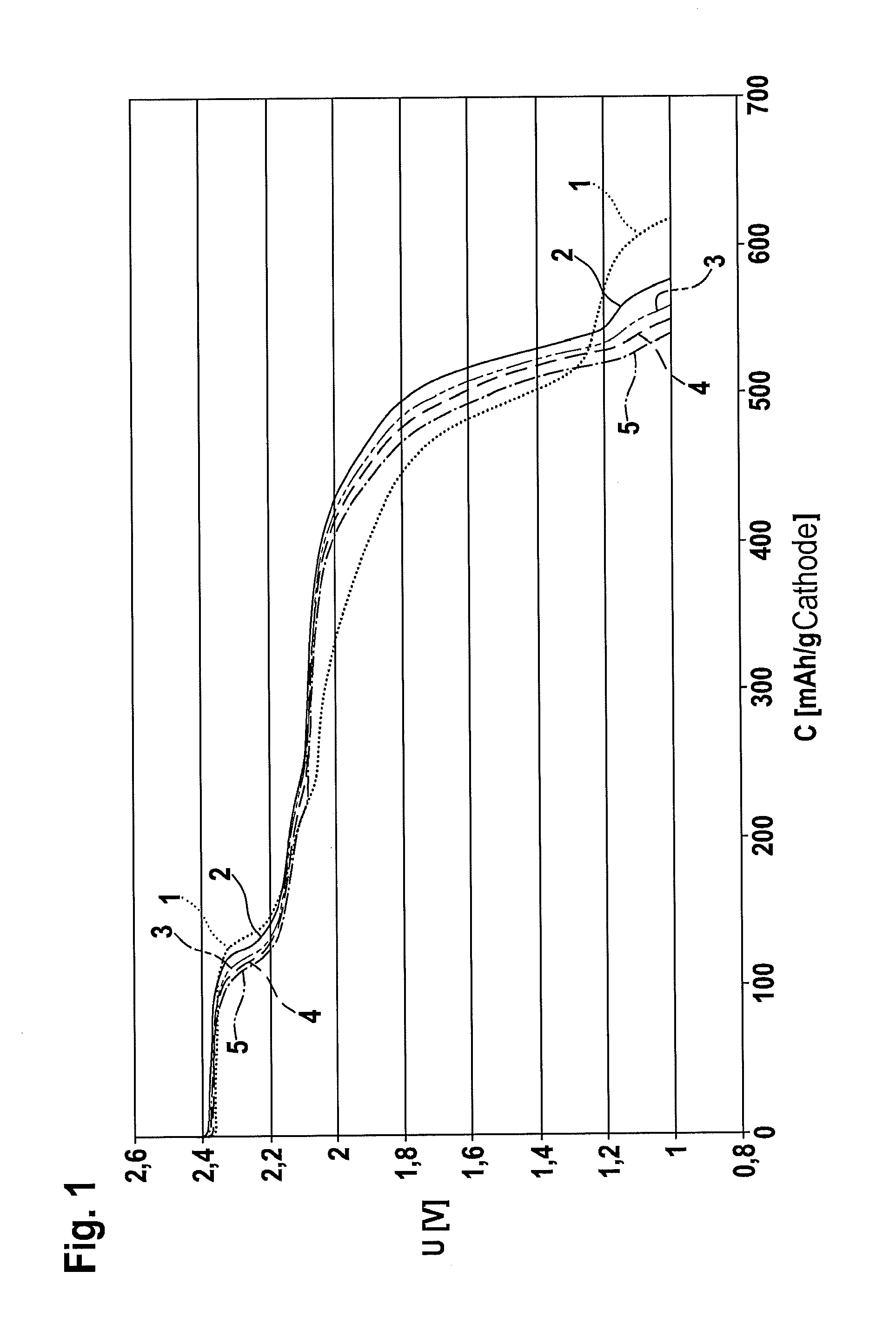Cathode material for a lithium-sulfur battery
a lithium-sulfur battery and cathode material technology, applied in the direction of non-metal conductors, cell components, conductors, etc., can solve the problems of elemental sulfur not being able to be resolved using scanning electron microscopy, markedly lowering the energy density, etc., to achieve excellent contact, high average voltage, and fine sulfur distribution
- Summary
- Abstract
- Description
- Claims
- Application Information
AI Technical Summary
Benefits of technology
Problems solved by technology
Method used
Image
Examples
Embodiment Construction
[0043]FIG. 1 shows a voltage characteristic of a lithium-sulfur cell having a cathode which is produced by a specific development of an example method according to the present invention.
[0044]To produce the cathode, 0.11 g of elemental sulfur was dissolved in 7 ml toluene at a temperature of 50° C. Then, 0.05 g poly-3-hexyl thiopene was added and the solution stirred for 60 minutes. Next, 0.03 g graphite and 0.02 g soot were added and the resulting dispersion stirred for another 60 minutes.
[0045]The cathode slurry produced in this manner is raked onto an aluminum foil and dried on a heating plate at 60° C. The layer thickness in the dried state amounts to 15 μm to 20 μm.
[0046]FIG. 1 shows the discharge profile of a lithium-sulfur cell having a cathode obtained in this manner for the first to the fifth charge cycle. FIG. 1 illustrates that both high capacities of more than 550 mAh / g of cathode material and a high average voltage of 2.1 V were achieved. This results in an energy densi...
PUM
 Login to View More
Login to View More Abstract
Description
Claims
Application Information
 Login to View More
Login to View More - R&D
- Intellectual Property
- Life Sciences
- Materials
- Tech Scout
- Unparalleled Data Quality
- Higher Quality Content
- 60% Fewer Hallucinations
Browse by: Latest US Patents, China's latest patents, Technical Efficacy Thesaurus, Application Domain, Technology Topic, Popular Technical Reports.
© 2025 PatSnap. All rights reserved.Legal|Privacy policy|Modern Slavery Act Transparency Statement|Sitemap|About US| Contact US: help@patsnap.com

